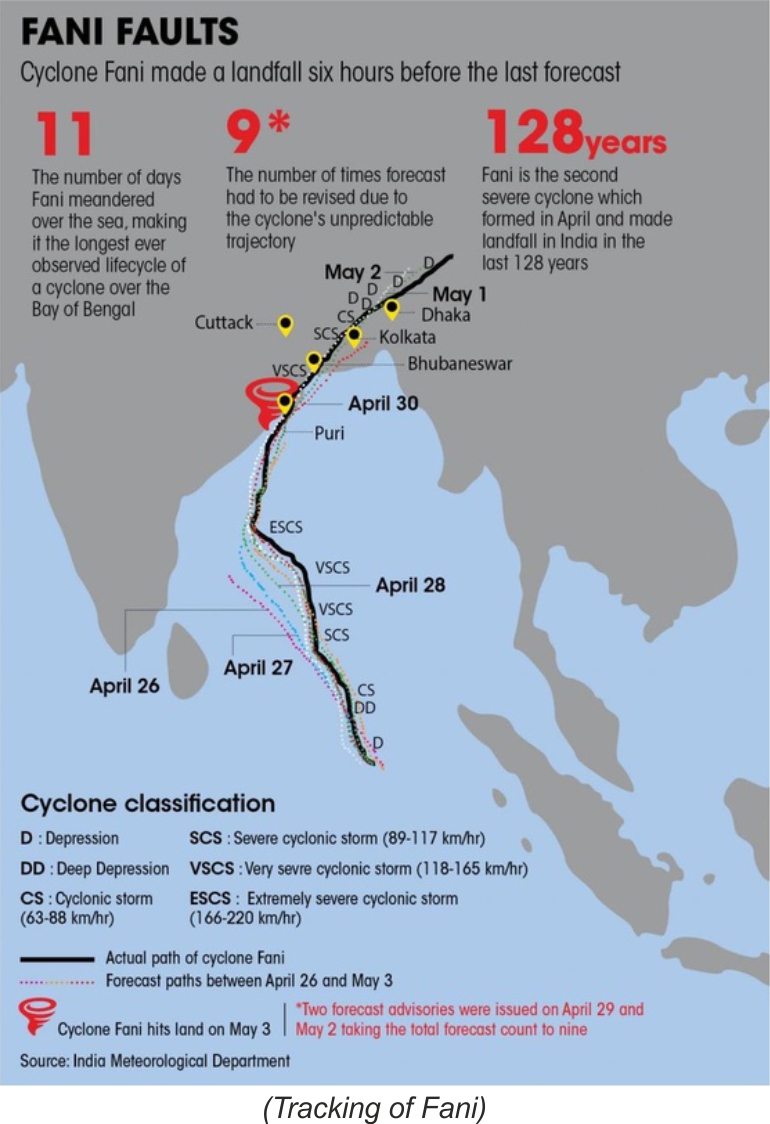Biodiversity & Environment
Cyclone Fani Creates Four New Mouths in Chilika Lake
- 11 May 2019
- 5 min read
The recent ‘Cyclone Fani’ which hit the eastern coast of India, has created four new mouths in Chilika Lake.
Key points
- Before Fani hit the Odisha coast, Chilika lake had only two active mouths - the point where it meets the sea. But, now four new mouths have opened due to wave energy with high tidal prism.
- With the opening of new mouths, a lot of sea water is entering Chilika Lake and, thereby increasing salinity of Chilika lagoon.
- Chilika lake has a brackish water (mixture of saline and fresh water), however increasing salinity may alter Chilika’s ecosystem.
- Generally, if sea water ingression goes up, fish migration will increase and the biodiversity will get richer. However, its long term impact needs a proper vigil.
Chilika Lake
- It is a brackish water lagoon, spread over the Puri, Khurda and Ganjam districts of Odisha State on the east coast of India.
- It is the largest coastal lagoon in India, located at the mouth of the Daya River which is flowing into the Bay of Bengal, covering an area of over 1,100 km2.
- It is designated as ‘wetland of international importance under the Ramsar convention.
Cyclone Fani
- It is categorized as an extremely severe cyclone (ESC).
- The name of the cyclone fani (pronounced as Foni) was suggested by Bangladesh. It means ‘snake’ or ‘hood of snake’.
- Data from the India Meteorological Department (IMD) show that the last time an extremely severe cyclone hit India in May was in 2004.
NOTE: The cyclones are classified as severe (MSW of 48-63 knots), very severe (MSW of 64-89 knots), extremely severe (MSW of 90-119 knots) and super cyclonic storm (MSW of 120 knots or more). One knot is equal to 1.8 kmph.
What makes Cyclone Fani special?
- Timing and strength are two factors that make Cyclone Fani, different from most other tropical cyclones at this time of the year.
- It is the second severe cyclone which formed in April and made landfall in India in the last 128 years.
- It was the longest-lived cyclone in the Bay of Bengal ever observed. The elongated time period of the storm went on for 11 days in the sea and land put together.
Preparedness
- The IMD tracked the storm and issued numerous yellow warnings for much of the south-eastern portion of India when the cyclone started to intensify.
- Doppler radars at Paradip and Gopalpur ports helped in tracking the cyclone accurately.
- 'Early Warning Dissemination System (EWDS) project’ which was commissioned in 2018, addresses the existing gap in disseminating disaster warning up to the community level.
- Odisha evacuated over 1.2 million residents from vulnerable coastal areas and moved them to higher ground and into cyclone shelters built a few miles inland.
- Teams of National Disaster Response Force (NDRF), Odisha Disaster Rapid Action Force (ODRAF) along with State fire service personnel have been deployed. Defence forces were on high alert to meet any eventuality.
- On account of this, the number of casualties contained to minimal. However, there was extensive damage to the infrastructure especially, power and telecommunications.
Early Warning Dissemination System (EWDS):
- It aims at establishing a fool-proof communication system to disseminate disaster warning up to the community level.
- It is a first of its kind automatic public address system in the country, implemented under national Cyclone Risk Mitigation project with the help of World Bank.
Way Forward
- Cyclone Fani has left behind a trail of devastation and acute suffering in Odisha. The challenge now is to restore the livelihood of people.
- Administrations are on full throttle in repair and relief measures. However, repairs and rehabilitation work needs to be done quickly owing to the upcoming monsoon season.





